.webp)
The Grounds Guys provide insights on fast-growing ground cover plants to enhance your landscape.
|
Last Updated April 10, 2023
Fast-growing ground cover is an ideal plant for those spots in your landscape where nothing seems to grow well. These bare areas in your landscape can often be found under trees, or maybe you’ve purchased a new home, and the landscape is barren.
Fast-growing ground cover plants aren’t just great for covering up bare spots on your landscape; they can also add a splash of color to your yard. Some fast-growing ground cover plants can reward you with aromatic delights and flavorful treats too. Why wait months to get the landscape look you love? Fast-growing ground cover can give you the landscape you want quickly.
When selecting your fast-growing ground cover plants, it's important to consider factors such as climate, placement, lighting, and soil type. Fortunately, you have plenty of options. So whether you’re looking for fast-growing ground cover for sun or shade or you need fast-growing ground cover for slopes, there’s a solution ready to be planted!
Are you planning to redo your landscape? A professional can help point you in the right direction. As with all outdoor plants, be sure to choose ground cover that is suitable for your region from among the following options:
Table of Contents:
- Fast-Growing Ground Cover for Shade
- Sweet Woodruff
- Bunchberry
- Goldenstar
- Trailing Periwinkle
- Variegated Snow on the Mountain
- Japanese Pachysandra
- Irish Moss
- Yellow Archangel
- Fast-Growing Ground Cover for Full Sun
- Creeping Thyme
- Yellow Alyssum
- Ice Plant
- Creeping Juniper
- Dragon’s Blood Sedum
- Creeping Phlox
- Strawberry
- Asiatic Jasmine
- Planting and Maintaining Your Ground Cover
Fast-Growing Ground Cover for Shade
Sweet Woodruff
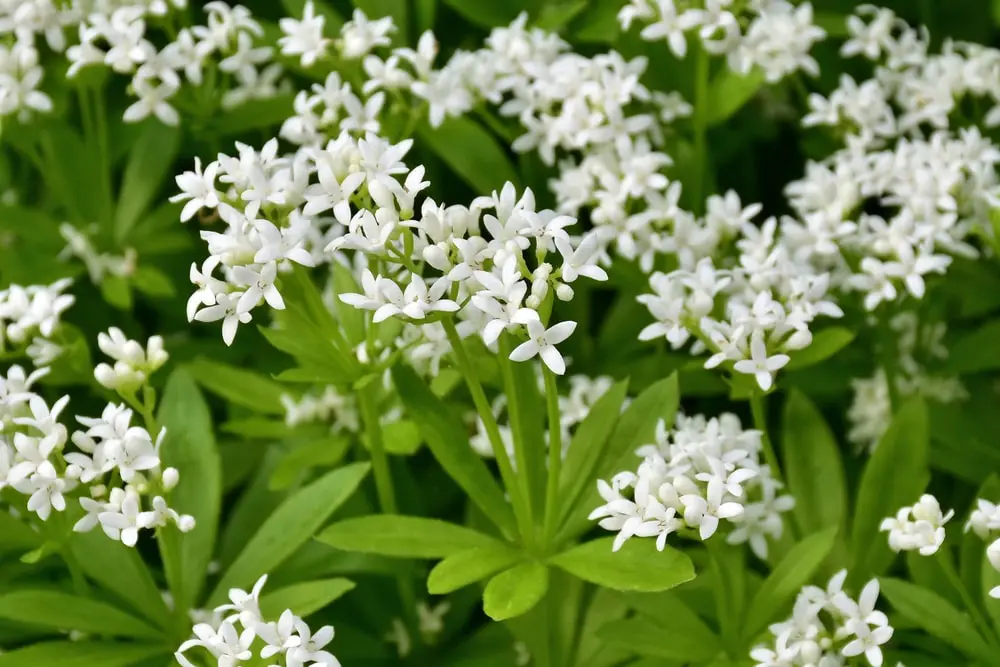
Zones 5 to 8
This versatile plant spreads quickly to form a dense cover around 15 inches high, with clusters of fragrant white flowers that appear at the start of each summer. Flowers and bright green leaves are both star-shaped and last well into the fall months.
Bunchberry
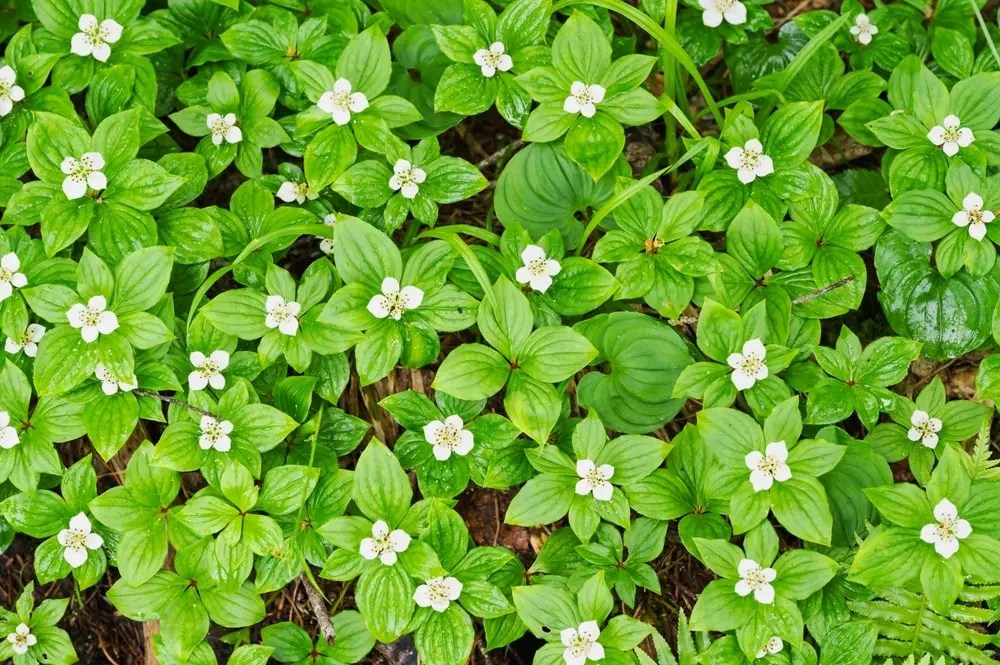
Zones 2 to 7
Bunchberry is a member of the dogwood family that produces emerald green foliage, large white flowers, and clusters of bright red berries. It stands six to eight inches high, spreads quickly, and thrives in cool, summer shade, preferring acidic soil.
Goldenstar
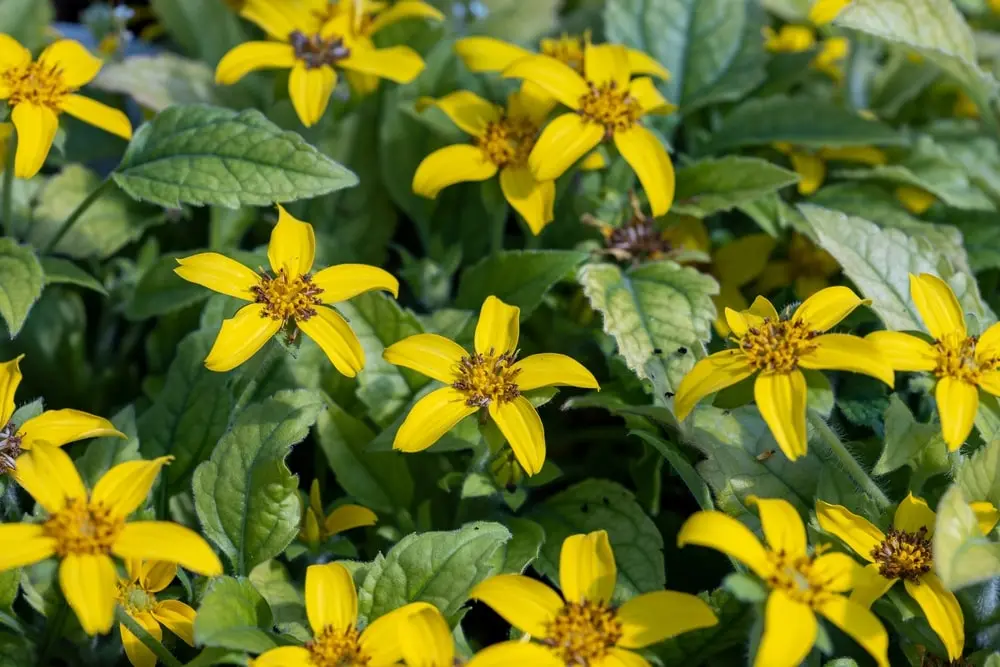
Zones 5 to 8
Bright yellow blooms and deep green leaves make this a showy favorite among gardeners. Flowers appear in both the spring and late summer, and the plant reaches heights of four to six inches. Goldenstar is hardy in both northern and southern climates and adapts well to either part sun or medium to full shade.
Trailing Periwinkle
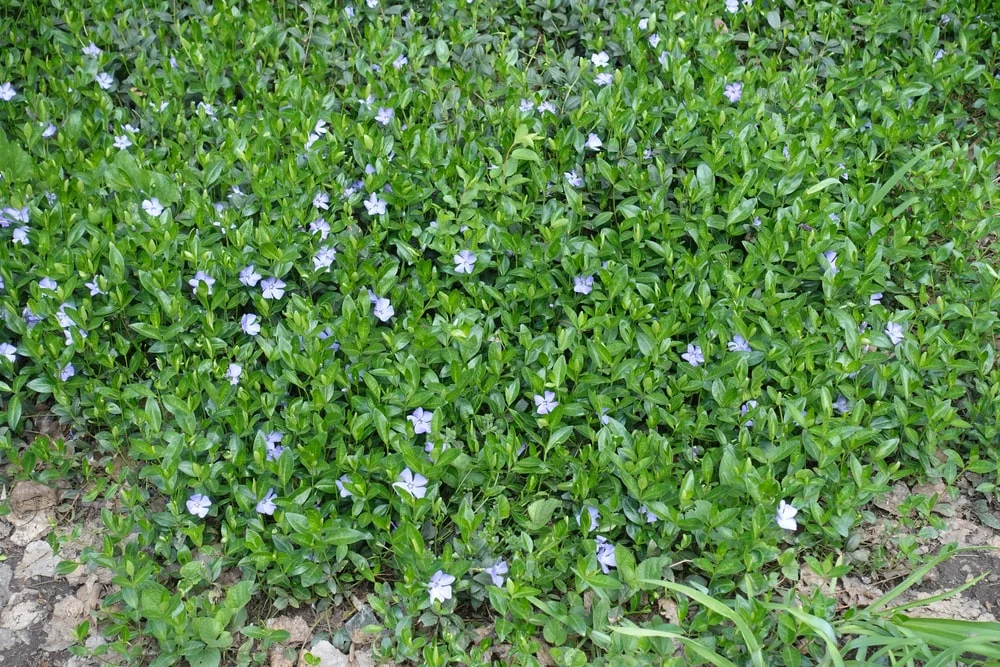
Zones 4 to 8
This plant grows quickly to form a dense ground cover with beautiful blue, lavender, white, or purple flowers. Full to partial shade is ideal, and the plant is a great low-maintenance, pest-free addition at the base of trees or tall shrubs, or at the apex of a rock wall.
Variegated Snow on the Mountain
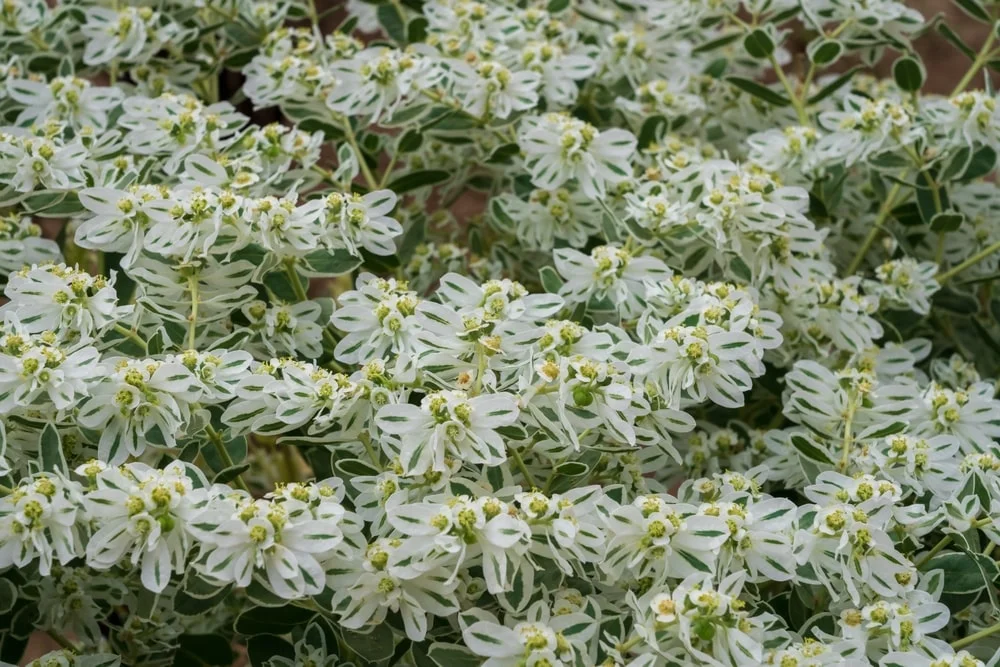
Zones 4 to 8
This fast-growing ground cover has umbrella-like clusters of white flowers, transforming barren areas into a sea of white snow. You can plant this fast-growing soft green and creamy white plant under trees because it loves the shade.
Japanese Pachysandra
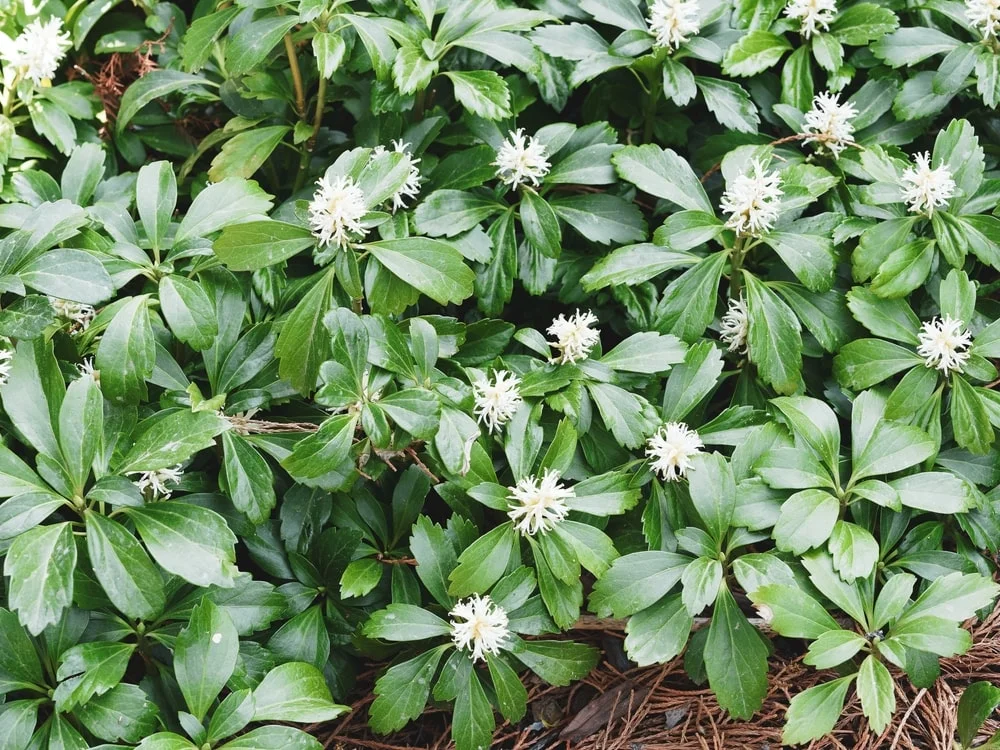
Zones 4 to 9
This low-maintenance plant thrives in dry shade and spreads rapidly. Blooms aromatic white flowers in the spring. It’s an ideal fast-growing ground cover for slopes because of its stunning, dark green carpeted lawn.
Irish Moss
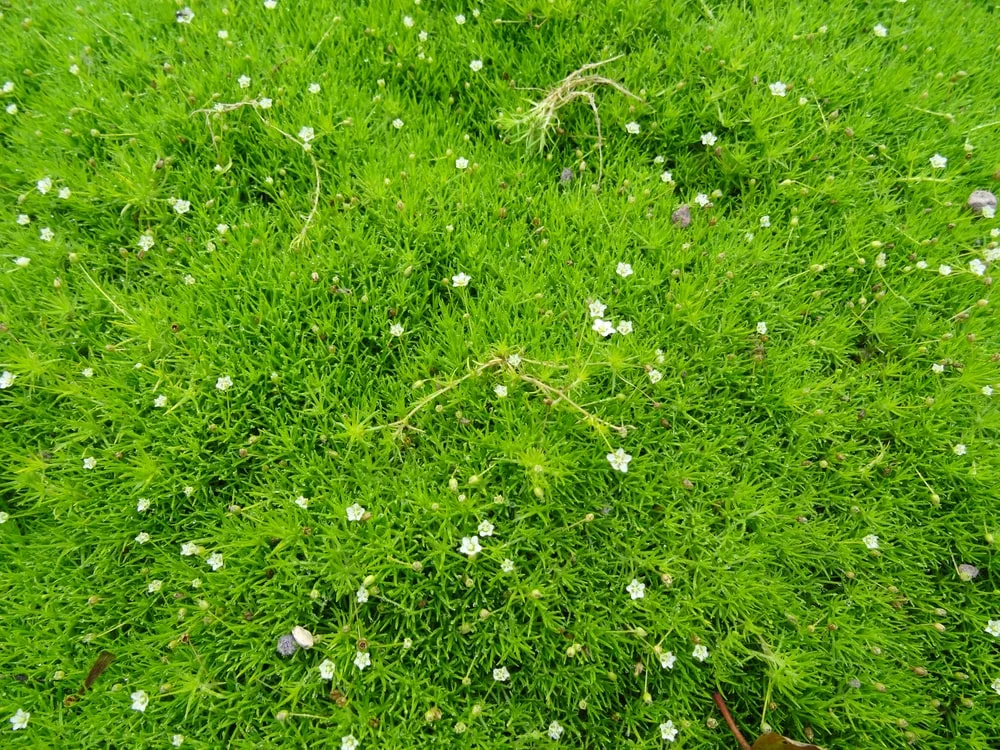
Zones 4 to 9
This very short, hardy plant looks and acts like other mosses. It has bright green foliage and tiny white blooms. The thick, lush mounds make it a perfect plant to carpet shady beds.
Yellow Archangel
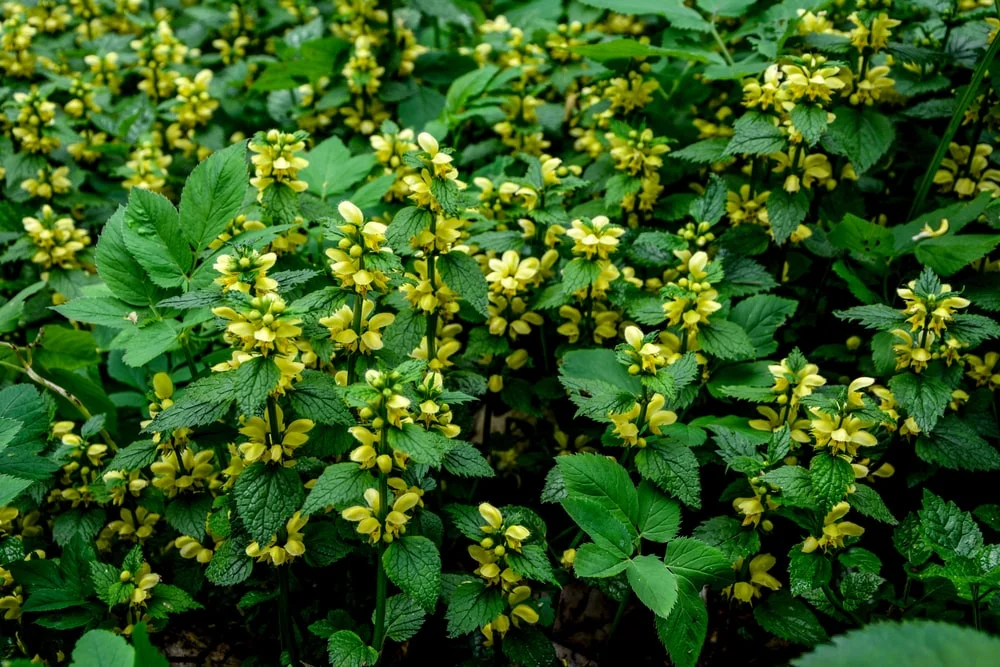
Zones 4 to 8
This is one of the fastest growing ground covers and is a great plant for anyone that wants to add a splash of yellow to their landscape. It can grow up to 1 foot tall and up to 2 feet wide.
Fast-Growing Ground Cover for Full Sun
Creeping Thyme
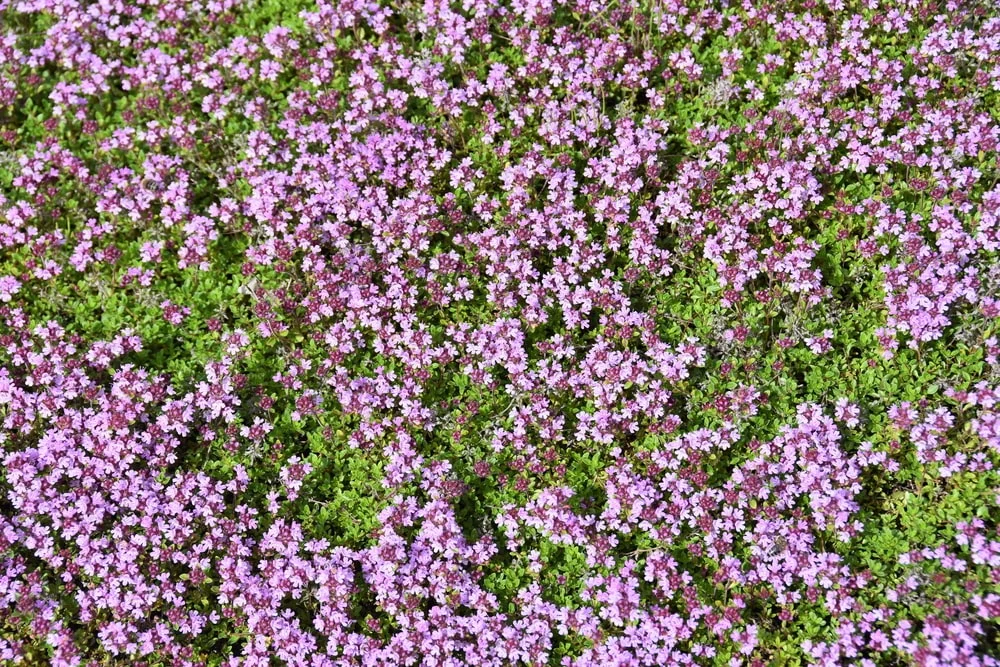
Zones 4 to 9
Choose from red, pink, white, or purple flowers for a showy, fast-growing, fragrant ground cover. Creeping thyme prefers poor soil that is well-drained and thrives in full sun or part shade.
Yellow Alyssum
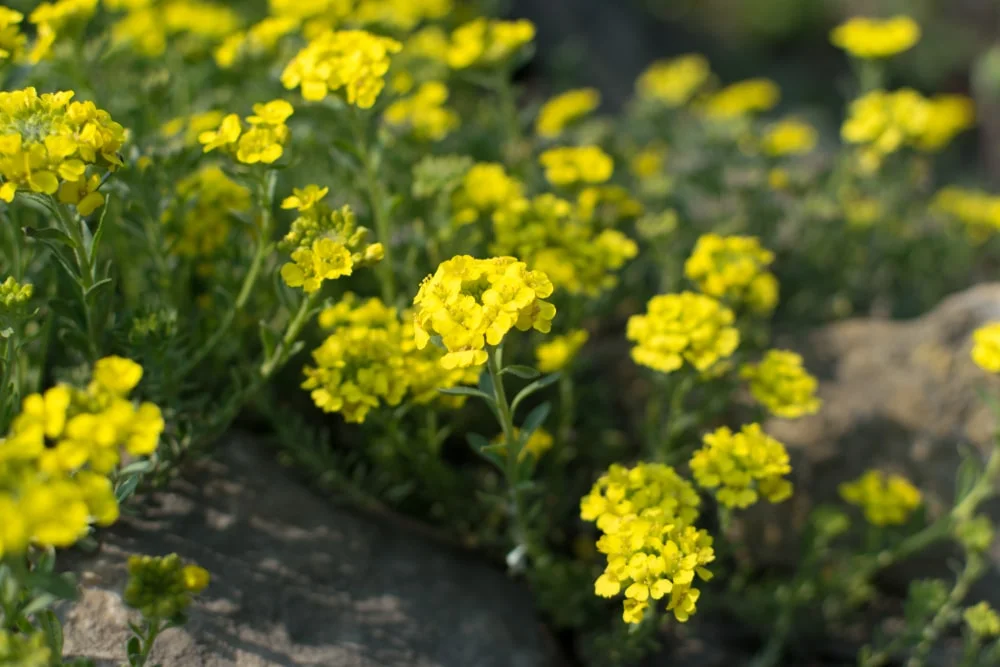
Zones 4 to 7
This perennial ground cover has bright yellow blossoms and grayish-blue leaves that are pleasing to the eye. Once the plant has finished blooming it can be cut back to encourage a second bloom, and it prefers dry to sandy, well-draining soil.
Ice Plant
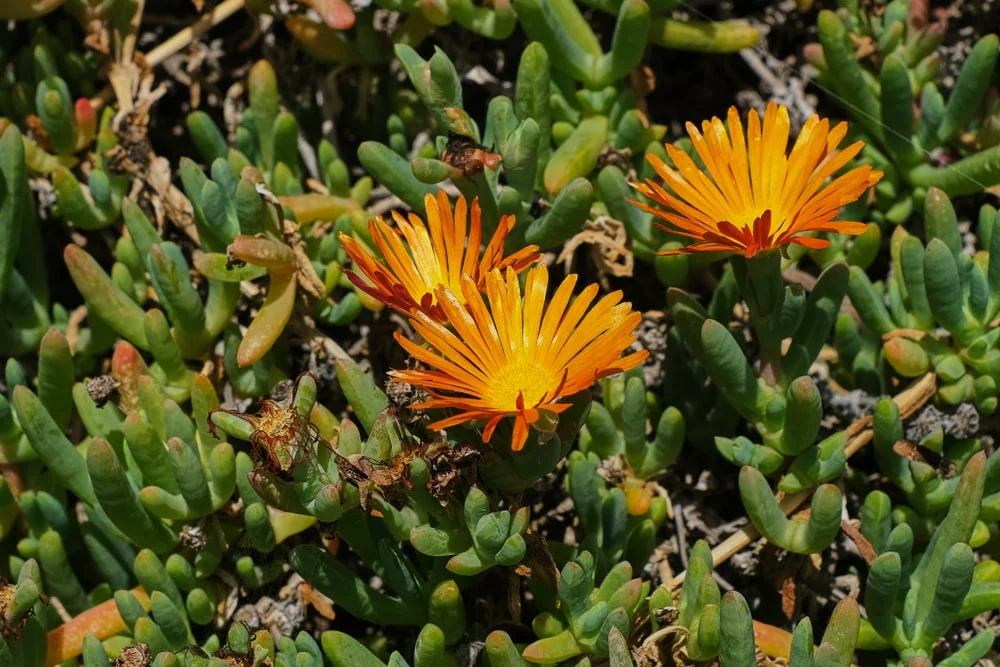
Zones 5 to 10
This succulent ground cover is available with orange, yellow, pink, scarlet, or red-purple flowers to suit any landscape or preference. Sharp drainage is needed to ensure optimal growth in soil with a neutral pH.
Creeping Juniper
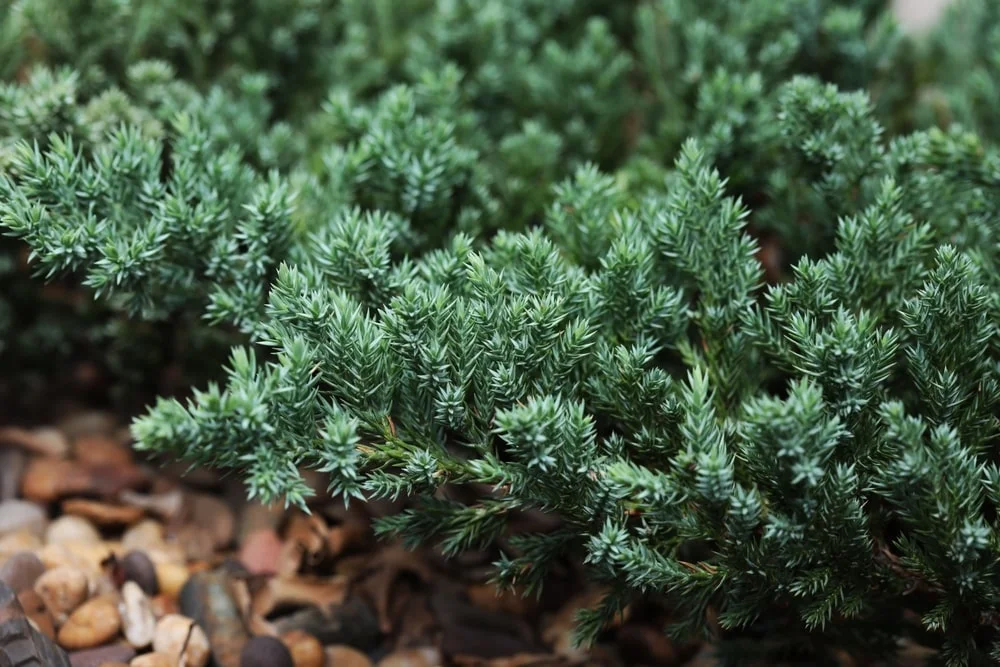
Zones 3 to 9
Ideally suited for hillside erosion control, this ground cover is short, fast-growing, and low maintenance. Color varieties include blue-green, yellow-green, or dark green foliage.
Dragon’s Blood Sedum
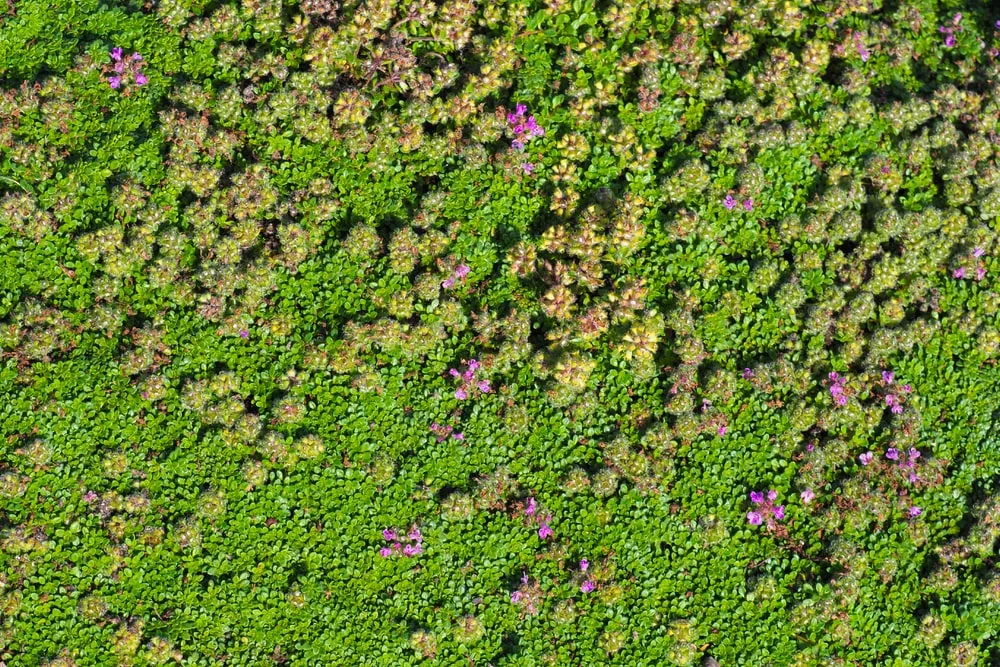
Zones 3 to 8
This fast-growing ground cover for full sun grows well in various conditions, including poor soil. Bright green leaves in the spring with beautiful red flowers appear in the summer. If you’ve got weeds, it’s also one of the most versatile weed-suppressing ground covers you’ll find.
Creeping Phlox
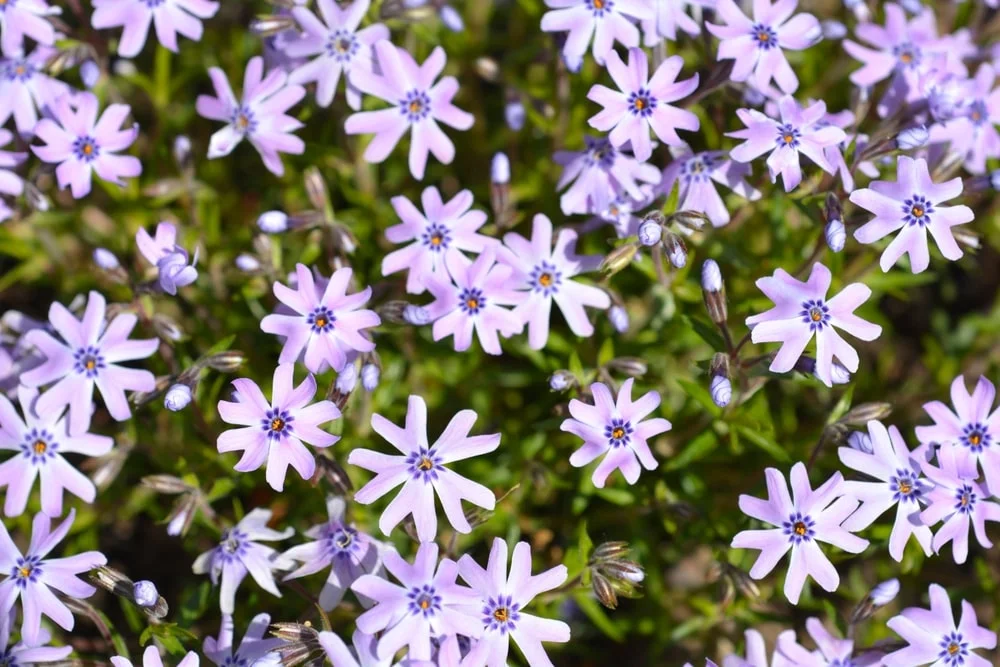
Zones 3 to 8
This is a fast-growing ground cover for full sun that’s perfect for almost any climate. Grows well in rack gardens and foundation plantings, and its evergreen foliage puts on a show of pink, white, purple, or blue carpet in late spring.
Strawberry
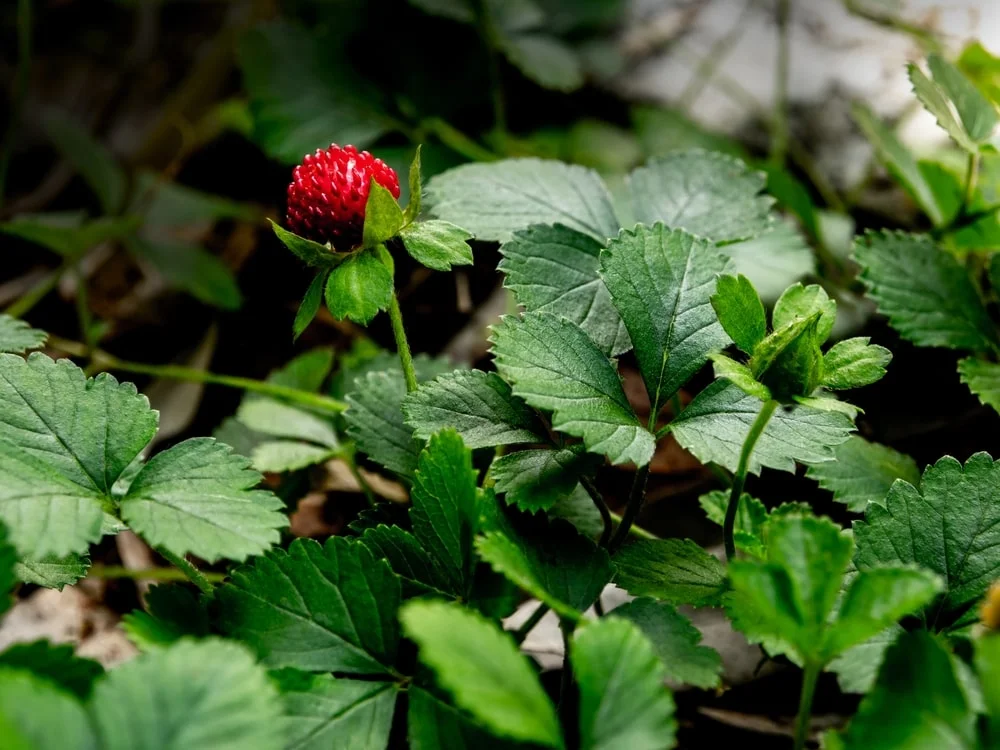
Zones 5 to 10
If you’re looking for a fast-growing ground cover plant that can naturalize easily and survives for years when taken care of, look no further than Strawberry. Its attractive green leaves and modest white flowers stay low to the ground; they can creep around anything in the garden bed. When the berries ripen, you’re rewarded with a sweet, flavorful treat.
Asiatic Jasmine
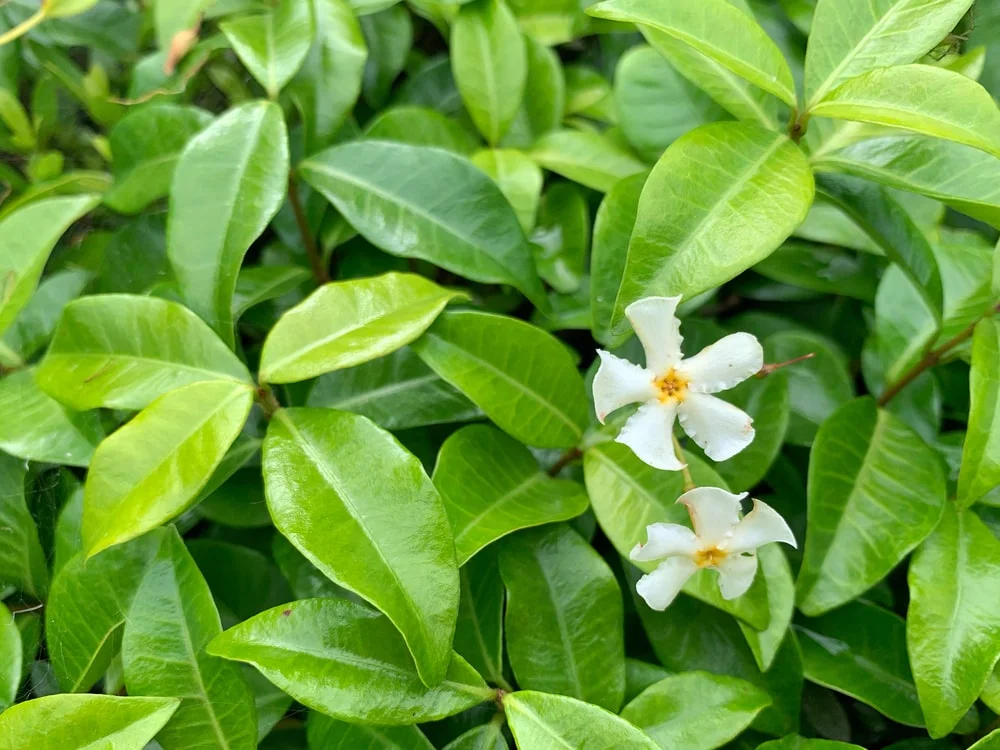
Zones 5 to 10
This fast-growing ground cover is a great option for warm climates. The stunning, dense, evergreen foliage grows close to the ground, so it’s an ideal plant to cover up bare spots around and underneath trees and shrubs. It can bloom aromatic yellow flowers in spring and summer, too!
Planting and Maintaining Your Ground Cover
- Most varieties need supplemental water until established.
- Ensure the ground cover you choose is suited for your hardiness zone and soil conditions.
- Remove damaged or dying foliage by pruning as needed.
- Get professional assistance.
Get Professional Landscaping Assistance
Do you still have questions about which ground cover would work best for your yard? We can help! The professionals at The Grounds Guys can evaluate your landscape and provide recommendations. Contact your nearest location for more information.
FAQs About Fast-Growing Ground Cover
As an industry leader, The Grounds Guys are committed to using our 20+ years of landscape knowledge and experience to help bring the vision for their property to life. This includes answering your questions about landscape and lawn care services. Below are answers to some of the most frequently asked questions about fast-growing ground cover for shade or full sun.
What are the best low-maintenance ground covers for shady areas in fall?
The top low-maintenance ground covers for shady areas that thrive through fall include Sweet Woodruff and Japanese Pachysandra. Sweet Woodruff produces star-shaped leaves that maintain their bright green color well into fall, while Japanese Pachysandra offers stunning dark green foliage that stays vibrant year-round.
Trailing Periwinkle is another excellent choice, forming dense coverage with minimal care requirements. These shade-loving options require little watering once established and naturally suppress weeds, making them perfect for busy homeowners. Irish Moss creates thick, lush mounds that carpet shady beds beautifully, while Variegated Snow on the Mountain transforms barren areas under trees into attractive displays.
Most ground covers for shade prefer well-draining soil and benefit from occasional pruning to remove damaged foliage. Their ability to spread naturally means less replanting and maintenance over time.
How quickly do shade-loving ground covers spread after planting?
Most shade-loving ground covers establish and begin spreading within 6-12 months after planting, with full coverage typically achieved in 1-2 growing seasons. Yellow Archangel ranks among the fastest growers, potentially reaching 2 feet wide in a single season under ideal conditions.
Japanese Pachysandra spreads rapidly through underground rhizomes, while Sweet Woodruff forms dense colonies quickly once established. Trailing Periwinkle grows at a moderate pace but creates thick, pest-free coverage that lasts for years.
Several factors influence spreading speed:
- Soil preparation and quality
- Consistent moisture during the first growing season
- Proper spacing during initial planting
- Climate and growing zone compatibility
Closer initial spacing (12-18 inches apart) results in faster coverage, while wider spacing (24+ inches) takes longer but costs less upfront. Most ground covers benefit from supplemental watering until their root systems establish.
Can ground covers help control soil erosion in shaded parts of my yard?
Yes, ground covers are highly effective for controlling soil erosion in shaded areas. Their dense root systems create natural erosion barriers that stabilize soil and prevent washout during heavy rains or snowmelt.
Japanese Pachysandra excels on slopes because its extensive root network holds soil firmly in place while creating an attractive dark green carpet. Bunchberry, a member of the dogwood family, develops strong root systems that anchor soil effectively in cool, shaded areas. Irish Moss forms thick, interconnected mats that prevent soil displacement on gentle slopes.
Key erosion control benefits include:
- Rapid root development that stabilizes loose soil
- Dense foliage coverage that reduces rain impact
- Natural water absorption that prevents runoff
- Year-round protection, even during dormant seasons
Ground covers work particularly well on slopes under trees where grass struggles to grow. Unlike traditional grass, shade-tolerant ground covers don't require frequent mowing or reseeding, making them ideal for hard-to-maintain sloped areas. For steep slopes or severe erosion problems, consulting with landscape professionals ensures proper plant selection and installation techniques.
This article is intended for general informational purposes only and may not be applicable to every situation. You are responsible for determining the proper course of action for your home and property. The Grounds Guys are not responsible for any damages that occur as a result of this blog content or your actions. For the most accurate guidance, contact The Grounds Guys location nearest you for a comprehensive, on-site assessment.